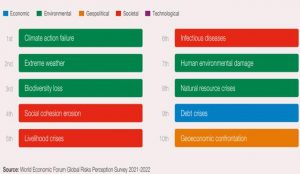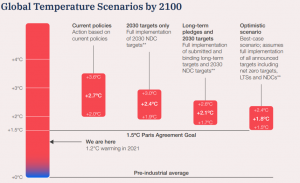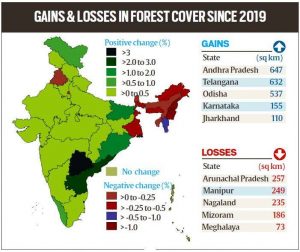Table of Contents
THE INTERNATIONAL RELATIONS
1. INDIA & UK FREE TRADE AGREEMENT
THE CONTEXT:The Ministry of Commerce and Industry, Consumer Affairs, Food and Public Distribution and Textiles, launched the Free Trade Agreement negotiations with the United Kingdom.
THE EXPLANATION:
- The FTA is expected to facilitate the target of doubling bilateral trade between India and United Kingdom by 2030, set by the Prime Ministers of both the nations.
- According to the agreements, the Mutual Recognition Agreements (MRAs) on Pharma could provide additional market access. There is also great potential for increasing exports in service sectors like IT/ITES, Nursing, education, healthcare, including AYUSH and audio-visual services. India would also be seeking special arrangements for movement of its people.
- India-UK FTA will also contribute to integrating value chains and help augment our mutual efforts to strengthen the resilience of supply chains. Reminding that the leaders of both nations had envisioned launching the FTA Negotiations in early 2022.
What is a Free Trade Agreement (FTA)?
A free trade agreement is a pact between two or more nations to reduce barriers to imports and exports among them. Under a free trade policy, goods and services can be bought and sold across international borders with little or no government tariffs, quotas, subsidies, or prohibitions to inhibit their exchange.
Key features of Free Trade Agreements (FTAs) :
- The member nations of FTAs explicitly identify the duties and tariffs that are to be imposed on member countries when it comes to imports and exports.
- FTAs typically cover trades in (a) merchandise — such as agricultural or industrial products (b)services — such as banking, construction, trading and so forth (c) intellectual property rights (IPRs),(d) investment (e) government procurement (f) competition policy and so on.
- FTAs additionally, for the most part, provide criterion called the ‘Rules of Origin (ROO)’, required for the determination of product’s country of origin for the imposition of the preferential tariff on international trade.
- FTAs act as an exception to the Most Favoured Nation principle adopted by WTO (World Trade Organisation).
India-UK bilateral trade
- Bilateral trade between India and UK stood at 3 billion in the year 2020. It was lesser than trade of 23.3 billion pounds in 2019. India and UK have also launched a new Enhanced Trade Partnership. It opened ways for future Free Trade Agreement.
- Currently, India is the largest market with which the UK has committed to negotiating any trade deal. India is the second largest investor in the UK economy.
- About 842 Indian companies in the UK, are employing more than 110,000 people. Combined revenue of Indian companies has increased by 87% in the last five years.
THE ENVIRONMENT AND ECOLOGY
2. THE WEF GLOBAL RISKS REPORT 2022
THE CONTEXT:According to Global Risks Report 2022, stated the environmental factors like human environmental damage and natural resource crisis were also believed to be among the top 10 risks in the period.
THE REPORT HIGHLIGHTS:
- The annual report was based on a survey of 1,000 global experts and leaders in business, government and civil society on their perception of long-term risks to the world. Views of over 12,000 leaders from 124 countries who identified their national short-term risks were also analysed.
- Also the report highlighted global economy is to shrink by 2.3% by 2024. However, in developing countries this is to be 5.5%. In rich countries, it will be 0.9%
- The Climate action failure, extreme weather events and biodiversity loss were perceived by experts as the biggest threats for the global population over the next decade.
- Since 2020, the pandemic has compounded the threats of social cohesion erosion, livelihood crises and climate action failure the most, the highest number of experts signalled.
- As many as 23 per cent respondents felt that mental health deterioration and extreme weather events were exacerbated by the pandemic that is in its third year now.
- The global economic gap will widen by 2024, when the developing countries will have fallen 5.5 per cent below their pre-pandemic expected GDP growth and advanced economies would have surpassed the same by almost 0.9 per cent, they underlined.
- Digital inequality and cyber security failure also feature among the critical short- and medium-term threats, the analysis pointed out.
TOP 10 GLOBAL RISKS BY SEVERITY OVER NEXT 10 YEARS


About the Report:
- The Global Risks Report series tracks global risks perceptions among risk experts and world leaders in business, government, and civil society. It examines risks across five categories: economic, environmental, geopolitical, societal, and technological. It publishes annually by WEF.
About WEF:
World Economic Forum (WEF) is a non-profit organisation that was founded in January 1971. WEF is based in Cologny-Geneva, Switzerland, and was formed with an initiative to improve the states of the world. This organisation was formerly known as the European Management Forum.
Other reports are published by WEF are:
- Global Risks Report
- Fostering Effective Energy Transition
- Social Mobility Index
- Global Gender Gap Report
- Global Risks Report
- Regional Risks for Doing Business
- Global Competitiveness Report
- Travel and Tourism Competitiveness Report
3. INDIA STATE OF FOREST REPORT 2021
THE CONTEXT:The India State of Forest Report 2021 has found the country’s forest cover has increased by 1,540 sq km since 2019. But a decline in the Northeast, and degradation of natural forests are a concern.
THE EXPLANATION:
The Ministry of Environment, Forests and Climate Change (MoEFCC) released the India State of Forest Report (ISFR) 2021. The report showed a continuing increase in forest cover across the country, but experts flagged some of its other aspects as causes for concern, such as a decline in forest cover in the Northeast, and a degradation of natural forests.

ISFR 2021: KEY FINDINGS
- ISFR 2021 has found that the forest and tree cover in the country continues to increase with an additional cover of 1,540 square kilometres over the past two years.
- India’s forest cover is now 7,13,789 square kilometres,21.71% of the country’s geographical area, an increase from 67% in 2019. Tree cover has increased by 721 sq km.
- The states that have shown the highest increase in forest cover are Telangana (3.07%), Andhra Pradesh (2.22%) and Odisha (1.04%).
- Five states in the Northeast – Arunachal Pradesh, Manipur, Meghalaya, Mizoram and Nagaland have all shown loss in forest cover.
- Mangroves have shown an increase of 17 sq km. India’s total mangrove cover is now 4,992 sq km.
- The survey has found that 46 % of the forest cover is prone to forest fires. Out of this, 2.81 % is extremely prone, 7.85% is very highly prone and 11.51 % is highly prone
- The total carbon stock in country’s forests is estimated at 7,204 million tonnes, an increase of 79.4 million tonnes since 2019.
- Bamboo forests have grown from 13,882 million culms (stems) in 2019 to 53,336 million culms in 2021.
What kind of forests are growing?
- Three categories of forests are surveyed –
- Very dense forests (canopy density over 70%),
- Moderately dense forests (40-70%) and
- Open forests (10-40%)
- Scrubs (canopy density less than 10%) are also surveyed but not categorised as forests.
- Very dense forests have increased by 501 sq km. This is a healthy sign but pertains to forests that are protected and reserve forests with active conservation activities.
What explains the decline in the Northeastern states?
- The Northeast states account for 98% of total geographical area but 23.75% of total forest cover. The forest cover in the region has shown an overall decline of 1,020 sq km in forest cover.
- While states in the Northeast continue to have some of the largest forested areas, such as Mizoram (84.5% of its total geographical area is forests) or Arunachal Pradesh (79.3%), the two states have respectively lost 1.03% and 0.39% of their forest cover, while Manipur has lost 1.48 %, Meghalaya 0.43%, and Nagaland 1.88%.
What else does the report cover?
- ISFR 2021 has some new features. It has for the first time assessed forest cover in tiger reserves,tiger corridors and the Gir forest which houses the Asiatic lion.
- The forest cover in tiger corridors has increased by 37.15 sq km (0.32%) between 2011-2021, but decreased by 22.6 sq km (0.04%) in tiger reserves. Forest cover has increased in 20 tiger reserves in these 10 years, and decreased in 32. Buxa, Anamalai and Indravati reserves have shown an increase in forest cover while the highest losses have been found in Kawal, Bhadra and the Sunderbans reserves.
- Pakke Tiger Reserve in Arunachal Pradesh has the highest forest cover, at nearly 97%.
What impact has climate change had?
- The report estimates that by 2030, 45-64% of forests in India will experience the effects of climate change and rising temperatures, and forests in all states (except Assam, Meghalaya, Tripura and Nagaland) will be highly vulnerable climate hot spots.
- Ladakh (forest cover 0.1-0.2%) is likely to be the most affected. India’s forests are already showing shifting trends of vegetation types, such as Sikkim which has shown a shift in its vegetation pattern for 124 endemic species.
- In 2019-20, 2 lakh forest fire hotspots were detected by the SNPP_VIIRS sensor, which increased to 3.4 lakh in 2020-21. The highest numbers of fires were detected in Odisha, Madhya Pradesh and Chhattisgarh.
How comprehensive a picture does the survey present?
- According to the experts, the survey results could be misleading as it includes plantations – such as coffee, coconuts or mango and other orchards – under forest cover.
- These plantations are distinctly different from natural forests where one hectare would be home to hundreds of species of trees, plants and fauna, whereas such plantations house only one species of tree.
- They also stated that the forest survey is carried out as an assessment of India’s biodiversity, but such an overarching survey does not meet that objective.
4. LADAKH, J&K, HIMACHAL MAY WITNESS RISE IN HIGH TEMP IN 2030, 2050 AND 2085: GOVT REPORT
THE CONTEXT: According to the forest Survey of India report, Ladakh, Jammu and Kashmir, Himachal Pradesh and Uttarakhand are likely to witness an increase in high temperature over periods of 2030, 2050 and 2085.
THE EXPLANATION:
- The Forest Survey of India (FSI) in collaboration with the Birla Institute of Technology and Science (BITS) Pilani, Goa has performed a study based on ‘Mapping of Climate Change Hotspots in Indian Forests’.
- According to the India State of Forests Report (ISFR) 2021, the collaborative study was carried out with the objective to map climatic hotspots over the forest cover in India, using computer model-based projection of temperature and rainfall data, for the future time periods i.e. year 2030, 2050 and 2085.
KEY HIGHLIGHTS:
- By analysing scenarios in the study periods that is 2030, 2050, 2085, it has been observed that Ladakh, Jammu Kashmir, Himachal Pradesh and Uttarakhand are projected to witness high temperature increase, while Andaman and Nicobar Islands, West Bengal, Goa, Tamil Nadu and Andhra Pradesh are projected to witness the least temperature rise over these periods.
- According to the report, North-Eastern states and Upper Malabar coast of India are projected to experience highest increase in rainfall,whereas, part of North-Eastern states like Arunachal Pradesh, Sikkim, North-Western parts of the country namely Ladakh, Jammu and Kashmir and Himachal Pradesh are projected to experience least increase and sometimes even decline in rainfall.
IPCC REFERENCE REPORT:
- According to the IPCC report released in 2021, the mean global temperatures have already risen by a little more than 1 degrees Celsius as compared to pre-industrial times.
- India aims to achieve the target of creating an additional carbon sink of 2.5 to 3 billion tonnes of carbon dioxide equivalent through additional forest and tree cover by 2030.
- Under the current assessment, the total carbon stock in the country’s forest is estimated to be 7,204 million tonnes and there is an increase of 79.4 million tonnes in the carbon stock of the country as compared to the last assessment of 2019.
- Soil organic carbon (SOC) represents the largest pool of carbon stock in forests, which has been estimated at 4,010.2 million tonnes. The SOC contributes 56% to the total forest carbon stock of the country.
- The report shows that Arunachal Pradesh has the maximum carbon stock of 1023.84 million tonnes (mt) followed by Madhya Pradesh 609.25 mt, Chhattisgarh 496.44 mt And Maharashtra 451.61 mt.
- “The per hectare carbon stock among different states, UTs indicates that Jammu and Kashmiris contributing maximum per hectare carbon stock of 173.41 tonnes per hectare followed by Himachal Pradesh with 167.10 tonnes per hectare, Sikkim 166.24 tonnes per hectare and Andaman and Nicobar Islands 162.86 tonnes per hectare”.
THE COVID CORNER
5. THE WHO RECOMMENDS ELI LILLY, GSK-VIR’S DRUGS FOR COVID-19
THE CONTEXT:A World Health Organisation (WHO) panel recommended use of two drugs by Eli Lilly, and GlaxoSmithKline and Vir Biotechnology for Covid-19 patients, adding treatment options as the fast-spreading Omicron variant renders many ineffective.
THE EXPLANATION:
- WHO data shows Omicron, which is evading protection provided by many vaccines and therapies, has been identified in 149 countries. It is quickly replacing Delta as the dominant variant in several nations, forcing governments and scientists to bolster defences with testing, shots and therapies.
- The panel strongly recommended Lilly’s baricitinib, sold under brand name Olumiant, for patients with severe Covid-19 in combination with corticosteroids, while conditionally endorsed GSK-Vir’santibody therapy for non-severe patients at the highest risk of hospitalisation.
- GSK-Vir’s monoclonal antibody therapy is the only one that has shown effectiveness against Omicron in lab tests, while similar treatments from Eli Lilly and Co and Regeneron Pharmaceuticals offered lower protection in such tests.
- The drug reduces the need for ventilation and had been found to improve patients’ chances of survival with no sign of an increase in adverse reactions.
THE PRELIMS PRACTICE QUESTIONS
QUESTION OF THE DAY 14TH JANUARY 2022
Q1. Which of the following are correctly matched?
- Nuakhai – Andhra Pradesh
- Wangala – Garo, Meghalaya
- Bihu – Assam
- Onam – Kerala
Select the correct answer using code given below:
a) 1, 2 and 3 only
b) 2, 3 and 4 only
c) 1, 3 and 4 only
d) All of them
ANSWER FOR 13TH JANUARY 2022.
Answer: D
Explanation:
- CPI for Industrial Workers (IW): Compiled by the Labour Bureau in the Ministry of Labour and Employment.
- CPI for Agricultural Labourer (AL): Compiled by the Labour Bureau in the Ministry of Labour and Employment.
- CPI for Rural Labourer (RL): Compiled by the Labour Bureau in the Ministry of Labour and
Employment.
- CPI (Rural/Urban/Combined): Compiled by the Central Statistical Organisation (CSO) in the Ministry of Statistics and Programme Implementation.

